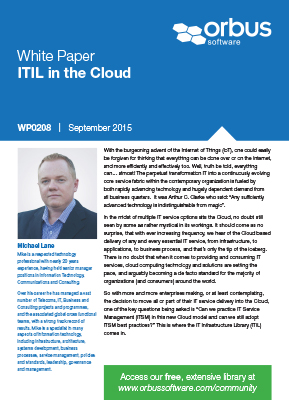Cloud computing is defined as "a model for enabling ubiquitous, convenient, on demand network access to a shared pool of configurable computing resources (e.g., networks, servers, storage, applications, and services) that can be rapidly provisioned and released with minimal management effort or service provider interaction." (The National Institute of Standards and Technologies). Cloud computing demonstrates a solid Return on Investment (ROI), affording organizations the opportunity to take advantage of technology and solutions that in days gone by simply would have been out of reach. For most enterprises, it’s not a case of "Will we go into the Cloud" or "When will we go into the Cloud", it’s an inevitable case of "Which of our services will we migrate to Cloud based delivery and which, if any, should we potentially keep in-house?"
With the burgeoning advent of the Internet of Things (IoT), one could easily be forgiven for thinking that everything can be done over or on the Internet, and more efficiently and effectively too. Well, truth be told, everything can… almost! The perpetual transformation IT into a continuously evolving core service fabric within the contemporary organization is fueled by both rapidly advancing technology and hugely dependent demand from all business quarters. It was Arthur C. Clarke who said: “Any sufficiently advanced technology is indistinguishable from magic”.
In the midst of multiple IT service options sits the Cloud, no doubt still seen by some as rather mystical in its workings. It should come as no surprise, that with ever increasing frequency, we hear of the Cloud based delivery of any and every essential IT service, from infrastructure, to applications, to business process, and that’s only the tip of the iceberg. There is no doubt that when it comes to providing and consuming IT services, cloud computing technology and solutions are setting the pace, and arguably becoming a de facto standard for the majority of organizations (and consumers) around the world.
So with more and more enterprises making, or at least contemplating, the decision to move all or part of their IT service delivery into the Cloud, one of the key questions being asked is “Can we practice IT Service Management (ITSM) in this new Cloud model and can we still adopt ITSM best practices?” This is where the IT Infrastructure Library (ITIL) comes in.
Login to continue reading or register now to download the ebook.
